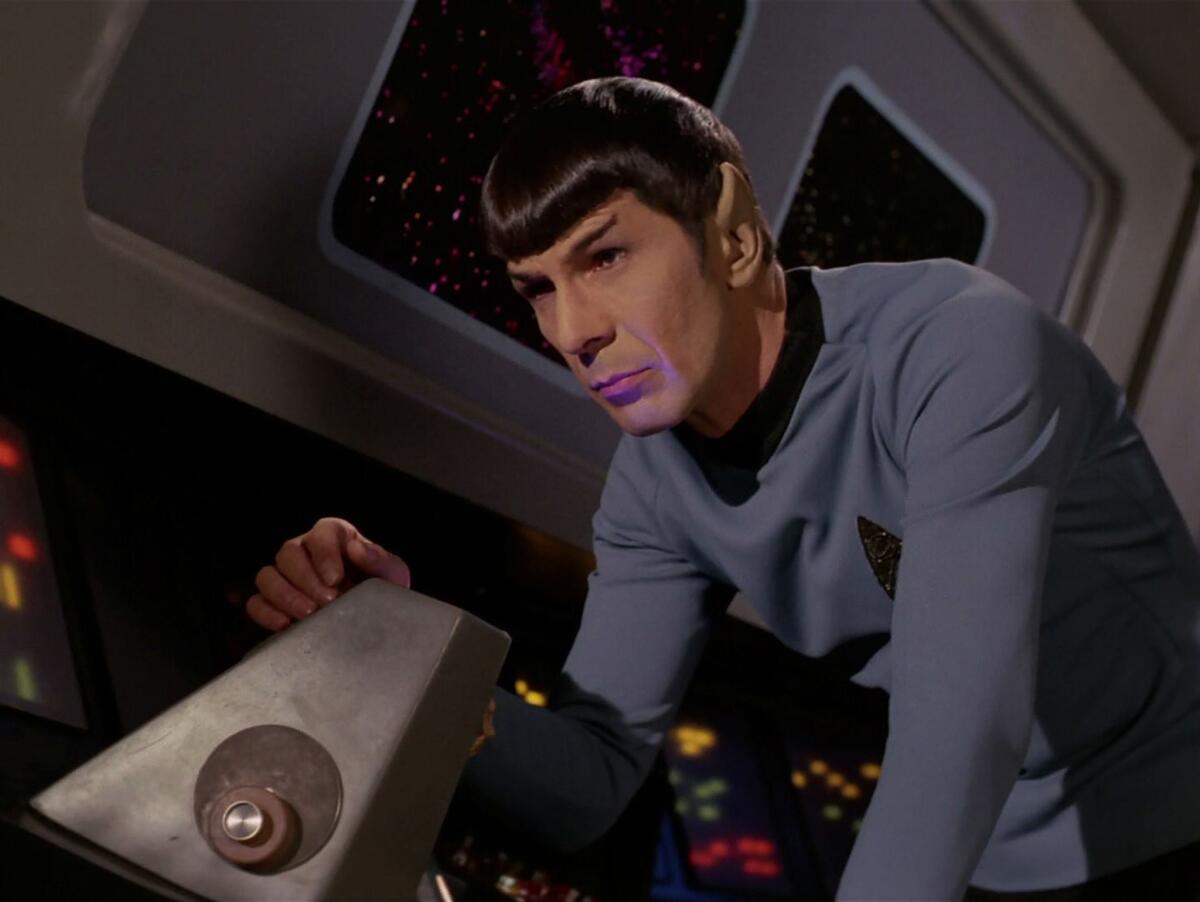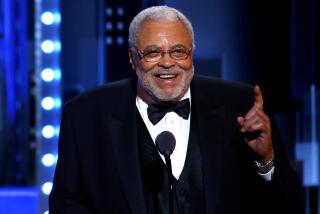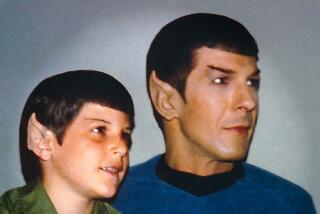Leonard Nimoy, Spock, and the mixed blessing of an iconic role

- Share via
In 1966, when Leonard Nimoy was cast on a new science-fiction TV series called “Star Trek,” he was already 15 years deep into an acting career that had often appeared to be boldly going nowhere in particular.
For more than a decade he’d been relegated to mainly bit parts in B-movies such as “Them!” and “Zombies of the Stratosphere” and TV series like “Gunsmoke” and “Wagon Train,” at one point getting a job delivering newspapers to try to make ends meet.
Taking the role on “Star Trek” of Spock, a coldly logical half-human, half-Vulcan, Nimoy didn’t expect much. He was just glad to have a steady gig for once.
“For the first time I had a job that lasted longer than two weeks and a dressing room with my name painted on the door and not chalked on,” he recalled years later.
Though “Star Trek” was canceled after just three low-rated seasons, Spock captured the audience’s imagination to a degree beyond anything Nimoy could ever have predicted – and would endure as the actor’s defining role for the rest of his career.
At times it felt to Nimoy like the greatest blessing an actor could receive; at others, a kind of Vulcan death grip of typecasting that forever prevented audiences from seeing him as anything other than a pointy-eared alien.
“I went through a definite identity crisis,” Nimoy wrote in a 1975 memoir titled “I Am Not Spock.” “The question was whether to embrace Mr. Spock or to fight the onslaught of public interest. I realize now that I really had no choice in the matter. Spock and ‘Star Trek’ were very much alive and there wasn’t anything that I could do to change that.”
Nimoy, of course, was hardly the first actor to become inextricably linked with an iconic role, and he would hardly be the last. While today’s fragmented and ever-shifting pop culture landscape offers performers relatively greater freedom to move from one role to another and constantly redefine themselves, television history is rife with cases of actors who became so associated with a single role that they could never quite escape it. Adam West on “Batman.” Gary Coleman on “Diff’rent Strokes.” Barbara Eden on “I Dream of Jeannie.” The entire cast of “The Brady Bunch.”
This type of actor/role melding was also a regular occurrence in Hollywood’s earlier days when film studios would churn out series -- today we might call them franchises -- featuring popular characters. So Bela Lugosi became Dracula, Boris Karloff Frankenstein and Johnny Weismuller Tarzan. When we see photos of those actors today all we can think of is their legendary creations.
The “Star Trek” franchise in its various iterations has been particularly notorious for typecasting its cast members. It’s no small irony that the pilot of the original series was called “The Cage,” because virtually every actor who’s ever set foot on the bridge of the Enterprise has ended up being trapped, to some degree, within the confines of the “Star Trek” universe, sucked into an endless wormhole of fan conventions and shopping-mall autograph signings – a phenomenon cuttingly spoofed in the 1999 sci-fi comedy “Galaxy Quest.”
Nimoy’s range as an artist and performer extended well beyond Spock. He proved himself a capable director in film and television, wrote several books of poetry, was an accomplished photographer, and turned in a handful of fine performances in non-“Trek”-related films like 1978’s “The Invasion of the Body Snatchers.” At the height of his “Star Trek” fame, he even sang on a series of folk-pop records, a musical body of work perhaps only equaled in its strangeness by the albums of William Shatner.
But as ambivalent as he may have initially felt toward Spock, over the years Nimoy ultimately came to embrace the role. In 1995 he wrote another memoir, this one titled “I Am Spock,” and he later reprised the role in J.J. Abrams’ 2009 big-screen “Star Trek” reboot and its 2013 sequel. Being Spock certainly afforded Nimoy a comfortable living -- as he liked to say, with Vulcan sagacity, it was far better to be typecast than not be cast at all.
And the fact is, Nimoy genuinely liked Spock -- how could you not? “If someone said, ‘You can have the choice of being any other TV character ever played,’ I would choose Spock,” he wrote. “I admired him. I respected him.”
It’s comforting to know that Nimoy achieved that kind of acceptance -- certainly there have been many cases of actors who have held on to bitterness for years over being defined by a single role.
In a sense, though, Nimoy’s relationship to Spock was out of his control from the first moment he had the ears glued on. An actor creates a character, but in the end that character belongs to the audience.
As Spock famously put it in the climactic scene at the end of “Star Trek II: The Wrath of Khan,” “The needs of the many outweigh the needs of the few ... or the one.”
That logic, for better or worse, is inescapable.
Follow @joshrottenberg
More to Read
Only good movies
Get the Indie Focus newsletter, Mark Olsen's weekly guide to the world of cinema.
You may occasionally receive promotional content from the Los Angeles Times.











